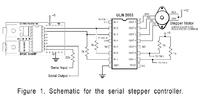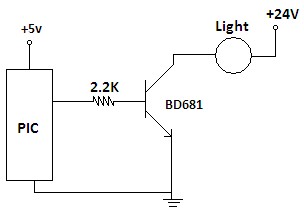irshad.khn
Newbie level 4

- Joined
- Sep 24, 2009
- Messages
- 6
- Helped
- 1
- Reputation
- 2
- Reaction score
- 1
- Trophy points
- 1,283
- Location
- Bangalore, INDIA
- Activity points
- 1,331
Hi,
I have a PIC micro which i want to connect to a 24v 1A DC light (bunch of LEDs packed into one big light), I know i can use a relay and ULN2003a and 24v supply to do the things, but I am not understanding how to connect them together. Please help me with the connections. A schematic would be of more help.
Thanks in advance
I have a PIC micro which i want to connect to a 24v 1A DC light (bunch of LEDs packed into one big light), I know i can use a relay and ULN2003a and 24v supply to do the things, but I am not understanding how to connect them together. Please help me with the connections. A schematic would be of more help.
Thanks in advance






